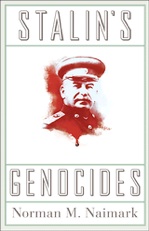I first heard of the controversy about Lithuania’s Museum of Genocide Victims shortly after the place opened. Many people took issue with the name because it was used by a museum of the sufferings of the people under Soviet regimes but did not address the holocaust.
Magazines such as Vilnius in Your Pocket mentioned this omission, and heated discussions took issue on the subject of this name, my own at the Cafe Diplomatico in Toronto, thousands of miles away.
For the first few years I paid little attention to the controversy and was simply glad the museum existed. Most people I knew had no knowledge of any kind about deportations from Lithuania, massive executions of prisoners by retreating Soviets in 1941, and years of anti-Soviet resistance afterward. I didn’t care much what the place was called because I saw strangers come out of there with a rounder knowledge of what happened in Lithuania before, during, and after the war.
But the heat continued to rise as claims were made that Lithuania, like other Eastern European countries, was turning rightward and trying to mask its own severe crimes in the holocaust by drawing moral equivalency between Hitler and Stalin. Related to this issue is the Prague Declaration of 2008, which calls for the examination of the crimes of Communism.
Commentator Dovid Katz has taken great issue with this declaration in the Guardian and on his site, Holocaust in the Baltics. He claims that Lithuanians (and others) are trying to deflect attention from their guilt. Lithuanian commentator Tomas Venclova has agreed with some of the charges. On the other side, notable people such as Vaclav Havel and Lithuania’s Emanuelis Zingeris are signatories of the Prague Declaration.
I had always hoped the narratives did not need to compete, but it seems they do. Let’s return to the word “genocide”.
I had always assumed the term “genocide” dated back to some kind of prehistory, so I was interested to see that it was only defined in 1948 by the United Nations. The lawyer, Raphael Lemkin, first promoted the concept and its definition initially included “social collectivities” as potential victims of genocide.
This formulation was objected to be the Soviet Union, and therefore “social collectivities” were removed. In other words, the Soviets did not want their murder of kulaks, “bourgeois”, and others to be considered genocide.
Therefore the Lithuanian use of “genocide” is not a new formulation. It is an old one.
I merely summarize here. Many people, including Dovid Katz, define the term variously in Wikipedia.
Norman Naimark’s book, Stalin’s Genocides, is really a long essay on the subject, suggesting that the word can indeed be used for the victims of Stalin.
Naimark is no right-wing apologist. While he does claim that from the point of the victim, the suffering of people is equal no matter who caused it, he also says the holocaust is the most extreme case of genocide in human history.
Naimark goes on to write: “… perhaps it is time to stop asking the question whether the group that is being murdered “in whole or in part” is national, ethnic, and religious group, or whether it is a social, political, or economic group. What is, after all, the difference when it comes to human life?”
Dovid Katz might argue that the fudging of terms, the movement of language, is an attempt to mask the crimes of the holocaust.
I hope that isn’t so, but I think the evil politicians might enact shouldn’t prevent the reappraisal of history and the opening up of the many narratives of WW2. One thing is certain, and that is we haven’t come to the bottom of this yet. For decades in the west we had a triumphalist view of WW2 in term of military achievement, and a melancholy view of the terrible crimes and loss of life in the holocaust, crimes perpetrated not only by Nazis but by willing helpers in large numbers all throughout Europe, most viciously in Eastern Europe where the bullets were actually fired.
The above is true, but it isn’t the whole story. We never paid much attention to the East, but the opening of archives in that part of the world has led to a flood of new information and some new interpretations.
While I am still reading Timothy Snyder’s excellent Bloodlands, a story of WW2 in Eastern Europe, I suspect his interpretation of the word “genocide” might be closer to Naimark’s. I’ll see when I reach the end of his work.
My own novel about the Lithuanian postwar partisans comes out in March in Canada. That coming event and the busy fall literary season have slowed down my blog posts. Through some moment of excessive enthusiasm, I have also joined the board of the Canadian Creative Writers and Writing Programs (CCWWP) and am wrapped up with organizing g a conference in Toronto in May of 2012. All of these activities put pressure on the posts, but this issue, the evolving story of Eastern Europe, are the ones that compel me the most, both in literary and historical frameworks.
